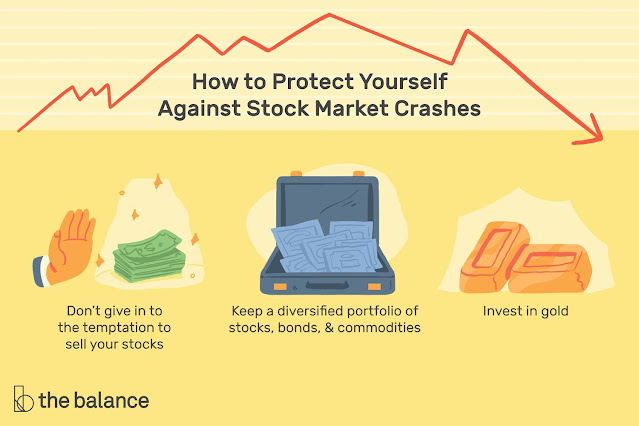The Markets Are Crashing: A Rational Perspective
In the world of cryptocurrency, market fluctuations are a common occurrence. The recent downturn in the markets has left many investors feeling anxious and uncertain. However, it is crucial to approach these situations with a rational mindset. In this article, we will delve into the current market conditions, draw lessons from past experiences, and shed light on the isolated nature of the crypto market. By understanding these factors, we can gain a clearer perspective on the situation and make informed investment decisions.
The Emotional Rollercoaster of Crypto Markets
Crypto Volatility and we learn to redefine love on our own terms.Investor Sentiment
Cryptocurrencies are known for their volatility, which often leads to emotional rollercoasters for investors. Sharp price drops can trigger panic and fear, causing irrational decision-making. It is important to remember that these market swings are not uncommon and have been observed throughout the history of crypto. Understanding the underlying dynamics can help us navigate through turbulent times with a calmer mindset.
Learning from the Past: The FTX Incident
A significant event that offers valuable insights is the FTX incident. When FTX experienced a disastrous event, the crypto space suffered a severe blow, resulting in a 25% price drop within three days. Many believed this would lead to a prolonged bear market. However, contrary to expectations, the market recovered within just 70 days. This example serves as a reminder that setbacks are often temporary, and the crypto market has shown resilience in the face of challenges.
Crypto Market Isolation
The Resilience of Traditional Finance
While the crypto market experiences downturns, it is crucial to recognize that traditional finance continues to thrive. The S&P 500 sets new highs, and the dollar continues to decline. This highlights the isolated nature of the crypto market, indicating that the current drop is specific to crypto and not reflective of broader economic trends.
Impact of External Factors on Crypto Market
When evaluating the severity of market events, it is essential to compare them to historical incidents like the FTX case. By assessing whether the current situation is worse than previous crises, we can better gauge the potential recovery time. If the issue at hand is isolated to crypto and not as severe as past events, it is reasonable to expect a shorter recovery period. The crypto market is highly responsive to external factors, and giving it time to cool off is often necessary before seeing bullish trends again.
Understanding Market Corrections
Analyzing the Falling Wedge Pattern
Zooming out and examining the daily timeframe, we can observe that the crypto market is still within a falling wedge pattern. The recent drop has brought us to the bottom of this range, testing the support level. It is crucial to remember that falling wedges often transition into bullish trends, and this pattern.
Analyzing the Falling Wedge Pattern
Zooming out and examining the daily timeframe, we can observe that the crypto market is still within a falling wedge pattern. The recent drop has brought us to the bottom of this range, testing the support level. It is crucial to remember that falling wedges often transition into bullish trends, and this pattern can provide an opportunity for a potential market reversal.
Historical Examples of False Breakouts
In times of market volatility, false breakouts are not uncommon. It is essential to approach price movements with caution and avoid making impulsive decisions based on short-term fluctuations. By analyzing historical data, we can identify instances where markets experienced similar drops, only to rebound and reach new highs. Patience and a long-term perspective are key when navigating through these uncertain times.
The Importance of Support Levels
The Role of Moving Averages
Support levels play a significant role in technical analysis and can provide valuable insights for investors. Moving averages, such as the 50-day and 200-day moving averages, are commonly used indicators to identify support levels. These levels represent areas where buying pressure tends to outweigh selling pressure, potentially leading to a market reversal.
Bitcoin's Strong Support Around $25,000
In the current market downturn, Bitcoin's support level around $25,000 becomes crucial to monitor. Historically, this level has acted as a strong support zone, with buyers stepping in to defend the price. If Bitcoin manages to hold this support and shows signs of recovery, it could signal a bullish reversal and instill confidence in the market.

The Dollar's Influence on Crypto
Dollar's Decline and its Effect on Bitcoin
The decline of the U.S. dollar has been a prominent theme in recent times. As the dollar weakens, investors often seek alternative stores of value, such as Bitcoin. The inverse correlation between the dollar and Bitcoin has been observed in the past, with Bitcoin benefiting from dollar weakness. Considering the current macroeconomic landscape, the dollar's decline could serve as a tailwind for the crypto market in the long term.
Interplay Between Traditional Finance and Crypto
While the crypto market may be isolated from traditional finance in terms of short-term price movements, it is still influenced by broader economic factors in the long run. Global economic conditions, government policies, and investor sentiment in traditional financial markets can have indirect effects on the crypto market. Understanding these interconnections can help investors assess the potential impact of external factors on their crypto investments.
Crypto as an Investment Opportunity
Investor Interest in Profitability
Despite the market downturns, the interest in cryptocurrencies as an investment opportunity remains strong. Investors are attracted to the potential for significant returns in a rapidly evolving market. However, it is crucial to approach crypto investments with a rational mindset, considering the volatility and inherent risks involved.
Crypto's Transient Emotional State
It is important to remember that the crypto market's emotional state is transient. Market sentiment can quickly shift from fear and panic to optimism and enthusiasm. By maintaining a long-term perspective and making informed investment decisions based on careful analysis, investors can position themselves to benefit from potential market recoveries.
The Importance of Fundamental Analysis in Crypto
While technical analysis plays a significant role in assessing price movements, it is also crucial to consider fundamental analysis when investing in cryptocurrencies. Fundamental analysis involves evaluating the underlying factors that can impact the long-term value of a cryptocurrency project.
Evaluating the Technology and Development Team
When analyzing a cryptocurrency project, it is essential to assess the technology behind it. Understanding the project's unique features, scalability, security measures, and potential real-world use cases can provide insights into its long-term viability. Additionally, evaluating the development team's expertise, transparency, and track record can give confidence in the project's ability to deliver on its promises.
Assessing Adoption and Partnerships
Adoption is a critical factor for the success of any cryptocurrency. Evaluating the project's user base, community engagement, and partnerships with established organizations can indicate its potential for widespread adoption. Partnerships with reputable companies or collaborations with other blockchain projects can enhance credibility and open up new avenues for growth.

Regulatory Environment and Legal Considerations
The regulatory environment surrounding cryptocurrencies can significantly impact their value and adoption. It is essential to consider the legal framework in which a project operates and how it complies with relevant regulations. Keeping track of government policies, regulatory developments, and potential legal hurdles can help investors assess the project's long-term prospects.
Diversification and Risk Management
Diversification is a fundamental principle of risk management, and it applies to the crypto market as well. Spreading investments across different cryptocurrencies, industry sectors, and asset classes can help mitigate risk. By diversifying their portfolios, investors can reduce their exposure to any single cryptocurrency and increase the potential for consistent returns.

The Role of Education and Research
Education and research are crucial for navigating the crypto market successfully. Staying informed about the latest industry developments, understanding new technologies and trends, and conducting thorough research on individual projects can give investors a competitive edge. There are numerous educational resources, online communities, and reputable publications dedicated to crypto education that can assist investors in expanding their knowledge.
Conclusion
Investing in the crypto market requires a combination of technical analysis, fundamental analysis, risk management, and continuous education. While short-term market downturns can be unsettling, maintaining a long-term perspective and focusing on the underlying fundamentals can help investors navigate through volatility and seize potential opportunities. By diversifying their portfolios, staying informed, and making informed investment decisions, investors can position themselves for success in the dynamic and evolving world of cryptocurrencies.













